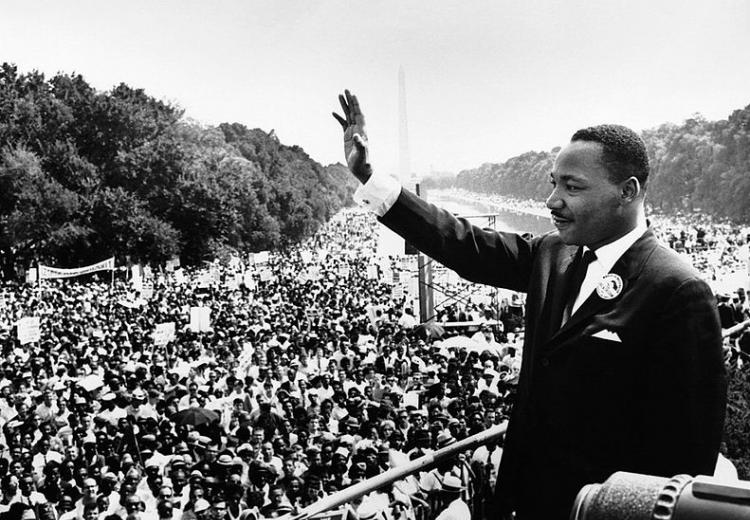Let Freedom Ring: The Life & Legacy of Martin Luther King, Jr.

Martin Luther King Jr. addresses a crowd from the steps of the Lincoln Memorial where he delivered his famous, “I Have a Dream,” speech during the Aug. 28, 1963, march on Washington, D.C.
Visualize the historic moment of Martin Luther King's stirring "I Have a Dream" speech through text and photographs. See the crowds, hear the words, and let King's powerful imagery awaken your students' thirst for justice in the world today.
In this lesson, students will learn about the life and work of civil rights leader Martin Luther King, Jr. Students will listen to a brief biography, view photographs of the March on Washington, and read a portion of King's "I Have a Dream" speech. After studying King's use of imagery and allusion, students will create original poetic phrases about freedom and illustrate them with symbols representing the forms of freedom that have yet to be realized in the United States.
Guiding Questions
How did Martin Luther King Jr. become a famous leader in the civil rights movement?
Why do we still celebrate the words of King's "I Have a Dream" speech?
To what extent has Dr. King's dream been realized?
Learning Objectives
Analyze Martin Luther King, Jr's "I Have A Dream" speech to determine his goals.
Assess King's use of figurative language in his "I Have a Dream" speech.
Examine contemporary society to determine the extent to which issues King discusses in his speech remain relevant.
